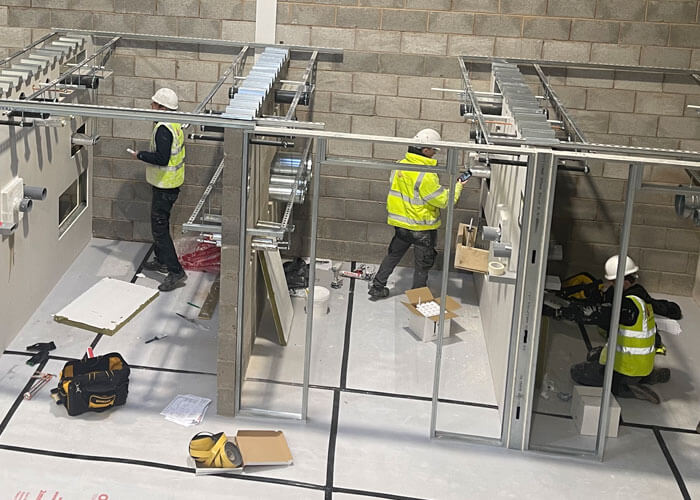Passive fire protection (PFP) is crucial for enhancing the fire safety of buildings and infrastructure. It includes various systems and materials designed to prevent the spread of fire, limit damage, and protect occupants and first responders. Here are the main reasons why PFP is essential:
1. Life Safety
– Containment of Fire and Smoke; PFP helps to compartmentalise the building, slowing the spread of fire and smoke. This containment buys critical time for occupants to evacuate and for firefighters to respond.
– Maintaining Structural Integrity; By protecting structural elements from fire, PFP ensures that buildings maintain their integrity longer during a fire, preventing premature collapse and providing safe evacuation routes.
2. Property Protection
– Minimising Fire Damage; Effective PFP can significantly reduce the extent of fire and smoke damage to the building and its contents. This can be crucial in protecting valuable assets, equipment, and documents.
– Preventing Fire Spread; By limiting the fire to its origin area, PFP helps in preventing extensive damage to other parts of the building, reducing repair and reconstruction costs.
3. Compliance with Regulations
– Building Codes and Standards; Most jurisdictions have stringent fire safety codes and standards that mandate the use of PFP systems. Compliance with these regulations is necessary to obtain building permits and avoid legal liabilities.
– Insurance Requirements; Many insurance companies require adherence to fire protection standards as a condition for coverage, influencing the design and construction practices of buildings.
4. Operational Continuity
– Business Continuity; By limiting fire damage and ensuring quicker recovery times, PFP helps businesses resume operations faster, minimizing downtime and financial losses.
– Protection of Critical Infrastructure; In facilities like hospitals, data centers, and power plants, maintaining operational integrity during a fire is vital. PFP ensures that critical services remain functional or are restored quickly after an incident.
5. Environmental Impact
– Reducing Toxic Emissions; Controlling fire spread and damage can reduce the release of toxic fumes and pollutants from burning materials, contributing to environmental protection.
– Conservation of Resources; By limiting the extent of fire damage, PFP helps in conserving building materials and reducing the need for extensive reconstruction, which in turn conserves natural resources.
6. Public Trust and Reputation
– Enhancing Safety Perception; Implementing robust PFP measures can improve the perceived safety of a building, enhancing its reputation and attracting tenants, customers, and investors.
– Corporate Responsibility; Demonstrating a commitment to fire safety reflects positively on a company’s corporate social responsibility efforts, showing a dedication to protecting people, property, and the environment.
In summary, passive fire protection is a fundamental aspect of fire safety strategy, addressing life safety, property protection, regulatory compliance, operational continuity, environmental considerations, and public trust.
Business have a responsibility to be following the current legislation of the Fire Safety Act 2021 which was actually updated in May 2022 for more information click here
Also following the tradgegy of Grenfell there have also been further reguations updated as of October 2023, read more on your responsibilities here
Here at JM Passive Fire Protection we are proud to a part of a number of accreditations ensuring the maximum safety when we are conducting work across all businesses.
For more information on are certifications visit our website here
We are also proud to offer training as part of our unique Academy with course designed to equip you with the skills you need to succeed in the fire protection industry. So, if you are looking for a career change that makes a difference, then contact our academy today via the website or email the academy manager clare@jmpfpac.uk for further information

